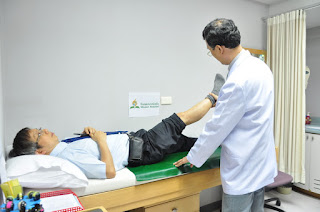Neuroplasticity - Exercise for Your Child's Brain
Late innovation has radically expanded the energy of medications and treatments for youngsters with cerebral paralysis. Past research concentrated treatment on the strong and skeletal frameworks of the body, intending to expand scope of movement and engine work as a rule. In any case, new information proposes that medicines are accessible that enhance these territories and general body and mental advancement. Current restorative research into the zone of neuroplasticity is apparently a standout amongst the most encouraging ranges of research for treating kids with cerebral paralysis.
What is Neuroplasticity?
Neuroplasticity depicts how the mind can adjust to emotional changes or wounds. Your mind works with a system of more than 100 billion neurons that are about all associated with each other. Envision a roadway loaded with autos; if a mischance happens out and about, the autos in the path of the mishap can converge into another path to proceed onto their goal. The mind can act likewise - harm to cerebrum pathways can train cerebrum neurons to reroute and make new pathways.
New research around there can employ promising outcomes for youngsters with cerebral paralysis. At the point when harm to the mind brings about cerebral paralysis, quite possibly the cerebrum will shape another pathway, which can go around the harm and reestablish usefulness to the influenced zone. This will probably occur in milder instances of cerebral paralysis, yet it isn't totally not feasible for extreme cases (however it might take more time to happen). Exercises, for example, work out, instruction, interfacing with others and psychological remediation can improve the probability of these new pathways being framed. Then again, loss of rest, awful nourishment and tension can serve to prevent their improvement.
Exercise is useful for the cerebrum
We as a whole know physical action is useful for our bodies, yet it can be useful for our brains, also. An article distributed in 2008, exercise can enhance temperament, discernment, handling and learning capacity. In any case, such movement shouldn't be strenuous - concentrated physical action may cause more anxiety and pressure than it mitigates. By the by, practice has appeared to be extraordinary compared to other exercises for modifying mind associations.
There are numerous ways you can advance in to enable your kid to get the most out of physical exercises. Keeping the action reliable and routine guarantees that advance is being made. This can be significantly less demanding to accomplish on the off chance that you have a particular specialist to work with amid every session. Beside exercise based recuperation sessions, consider fusing physical action into your kid's recess. On the off chance that you can, partake in these exercises - swing your kid from a swing set or do some activity with them to urge them to proceed.
What is Neuroplasticity?
Neuroplasticity depicts how the mind can adjust to emotional changes or wounds. Your mind works with a system of more than 100 billion neurons that are about all associated with each other. Envision a roadway loaded with autos; if a mischance happens out and about, the autos in the path of the mishap can converge into another path to proceed onto their goal. The mind can act likewise - harm to cerebrum pathways can train cerebrum neurons to reroute and make new pathways.
New research around there can employ promising outcomes for youngsters with cerebral paralysis. At the point when harm to the mind brings about cerebral paralysis, quite possibly the cerebrum will shape another pathway, which can go around the harm and reestablish usefulness to the influenced zone. This will probably occur in milder instances of cerebral paralysis, yet it isn't totally not feasible for extreme cases (however it might take more time to happen). Exercises, for example, work out, instruction, interfacing with others and psychological remediation can improve the probability of these new pathways being framed. Then again, loss of rest, awful nourishment and tension can serve to prevent their improvement.
Exercise is useful for the cerebrum
We as a whole know physical action is useful for our bodies, yet it can be useful for our brains, also. An article distributed in 2008, exercise can enhance temperament, discernment, handling and learning capacity. In any case, such movement shouldn't be strenuous - concentrated physical action may cause more anxiety and pressure than it mitigates. By the by, practice has appeared to be extraordinary compared to other exercises for modifying mind associations.
There are numerous ways you can advance in to enable your kid to get the most out of physical exercises. Keeping the action reliable and routine guarantees that advance is being made. This can be significantly less demanding to accomplish on the off chance that you have a particular specialist to work with amid every session. Beside exercise based recuperation sessions, consider fusing physical action into your kid's recess. On the off chance that you can, partake in these exercises - swing your kid from a swing set or do some activity with them to urge them to proceed.




No comments